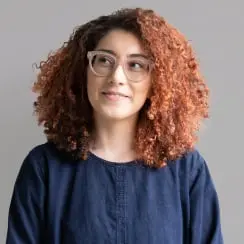 | 1.5 LU |
 | 1.5 LU |
By centering communities most impacted by racial inequity in our work, we seek to eliminate the perpetuation of problematic practices and policies impacting the built environment and those who have a voice in shaping it. We will share our growing learning and understanding with session attendees through a series of practices for engagement and critical dialogue facilitating a socio-spatial exploration of school spaces and design strategies that disrupt and transform the status quo as we bring the built environment into equity-centered solutions. We recognize the profound impact the physical environment has on fostering a welcoming and inclusive school. We know students and families' experience of space is cultural and our individual lived experiences guide how we feel welcomed into an environment. Our work as designers and architects making school facilities represents an opportunity to examine and acknowledge how systemic oppression and racism impact the built environment. It offers us an opportunity to disrupt broken and tired systems as we seek to undo legacies of racism in public education that still shadow our school spaces and design processes. By deeply understanding, and continually re-evaluating the dynamic relationship between space and social justice, we strive to ensure racial equity in both the design process and finished product promote equity and inclusion in the communities they serve. We consider equitable and just design a professional imperative in our work and we continue to identify how identity and positionality impact our roles as designers and architects planning and designing spaces that uplift and promote social justice. Our processes emphasizes a culturally responsive evaluation of space aimed to raise awareness and to question how material objects and spatial relationships can act to dismantle White dominant narratives, values and belief systems.
Learning Objectives:

Stacey (she/her) is a cis, white women who grew up in the desert and found her way to practice design in the Pacific Northwest. Relentlessly curious, her work is grounded in creating school buildings which consistently express the culture, aspirations, and identity of the communities they welcome in. She believes in a design process blurring the edge of designer and public in co-creation of experience. Stacey currently serves on the IIDA International Board of Directors and is a JEDI Champion with A4LE Washington Chapter.

Stephanie (she/her) is a first-generation Latina from the East Coast. At work, she is a collaborator, community engagement strategist, youth mentor and designer. Stephanie is passionate in facilitating meaningful conversations around justice, equity, diversity, and inclusion to further push our world forward. Stephanie has served on the AIA Oregon board of directors and is an active member of NOMA PDX. Stephanie has a Master of Architecture from the University of Oregon and BA from New York University.
This track elevates Research on learning and learning environments and focuses on methodology, findings, and implications for practice. Tangible takeaways are encouraged, including tools and resources that support innovation and improvements to learning environments. There is Art in how we utilize Science to improve our design outcomes and our design and research process. To this end, dissemination of research findings is a priority so that learning environments are re-imagined and enhanced based on evidence and measured impact, not based on trends.
Primary Core Competency
Ethics / Professionalism: Provides leadership and stewardship for the responsible investment of public and private funding into school facilities – while being a known advocate for the importance of the learning environment on a child’s future. They lead and have a record of leading transparent processes that help communities find common ground in developing solutions to complex and sensitive issues – advocating for long term solutions that address the needs of all children and stakeholders including underserved groups.